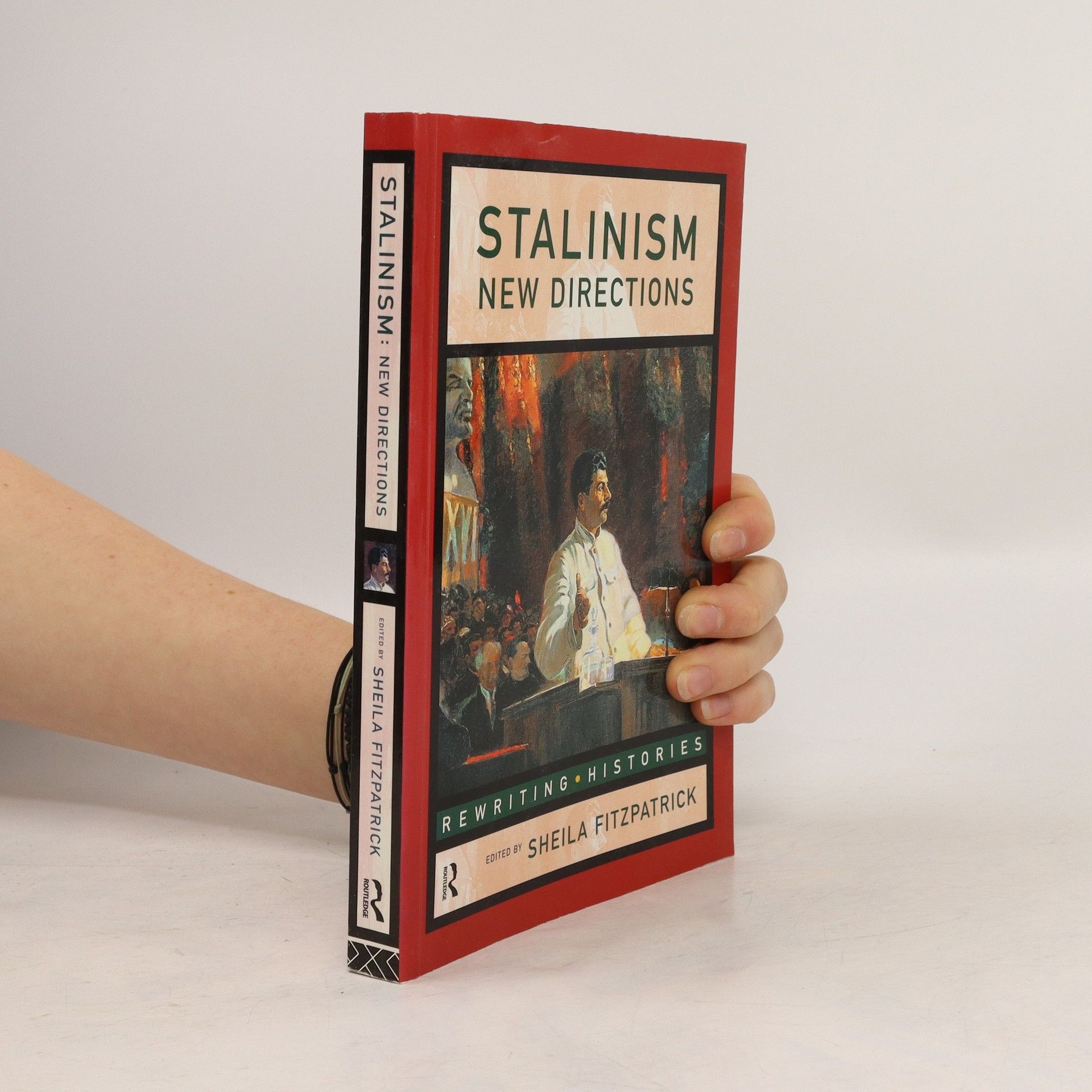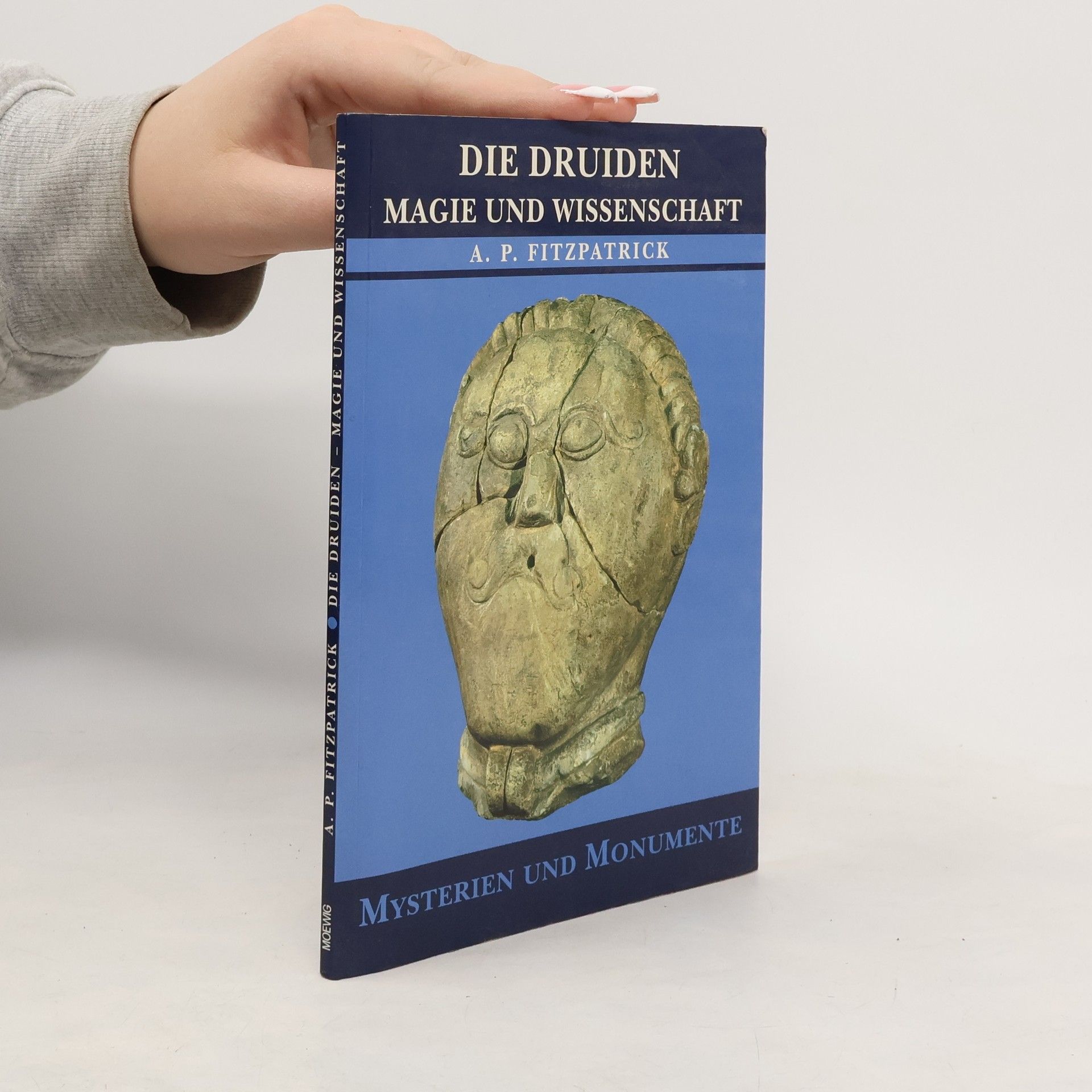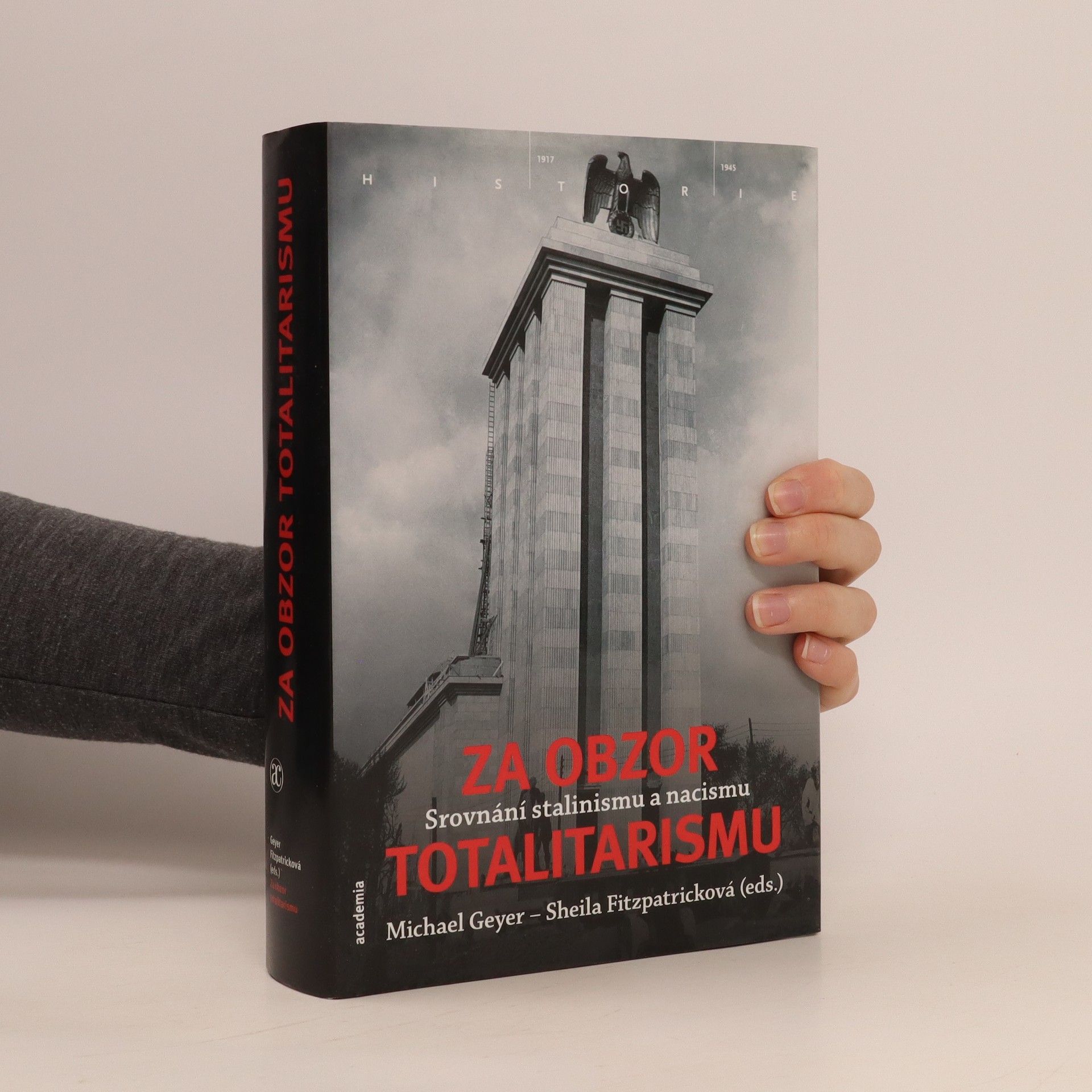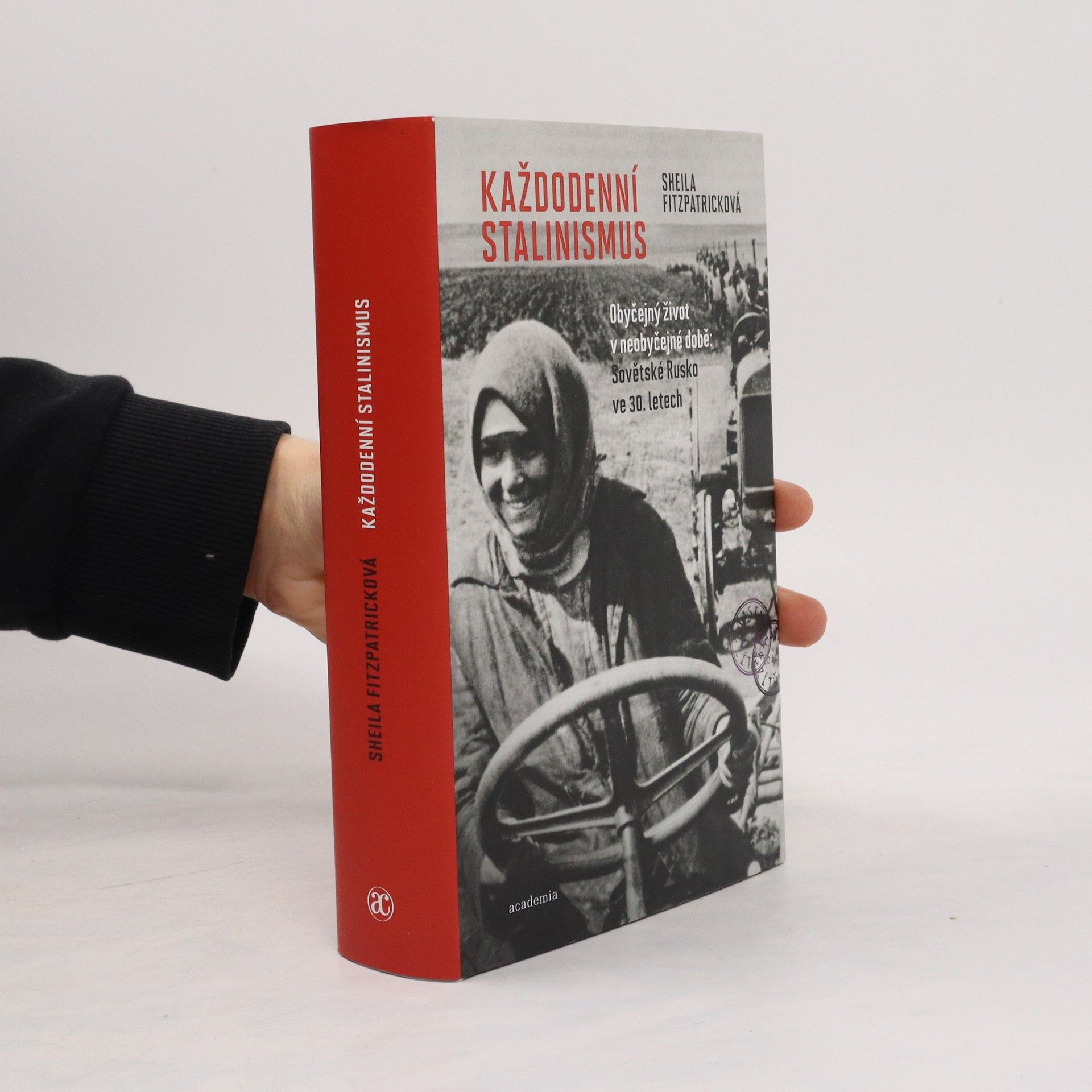Sheila Fitzpatrick Bücher
Sheila Fitzpatrick ist eine australisch-amerikanische Historikerin, deren Werk sich mit der sozialen und kulturellen Geschichte der stalinistischen Sowjetunion befasst. Sie untersucht, wie soziale Identität und Alltag diese Ära prägten, und stellt fest, dass die politische Kultur des Stalinismus paradoxerweise Ziele der demokratischen Revolution erreicht haben könnte. Als führende Figur der zweiten Generation der „revisionistischen Historiker“ nähert sich Fitzpatrick der sowjetischen Geschichte aus einer ausgeprägten „von unten“-Perspektive. Ihre Forschung zielt darauf ab, soziale Prozesse unabhängig vom Staat aufzudecken und nuancierte Einblicke jenseits zuvor dominanter Modelle zu bieten.







Education and Social Mobility in the Soviet Union 1921 1934
- 368 Seiten
- 13 Lesestunden
Focusing on Soviet education policy from 1921 to 1934, this sequel delves into the evolution of educational practices and ideologies during a transformative period in Soviet history. It builds upon the insights of the author's earlier work, "Commissariat of Enlightenment," providing a detailed analysis of how education was shaped by political and social changes. The book highlights the challenges and innovations in the educational system, reflecting broader themes of state control and ideological influence in the pursuit of enlightenment.
Stalinism : new directions
- 272 Seiten
- 10 Lesestunden
Stalinism is a provocative addition to the current debates related to the history of the Stalinist period of the Soviet Union. Sheila Fitzpatrick has collected together the newest and the most exciting work by young Russian, American and European scholars, as well as some of the seminal articles that have influenced them, in an attempt to reassess this contentious subject in the light of new data and new theoretical approaches.The articles are contextualized by a thorough introduction to the totalitarian/revisionist arguments and post-revisionist developments. Eschewing an exclusively high-political focus, the book draws together work on class, identity, consumption culture, and agency. Stalinist terror and nationalities policy are reappraised in the light of new archival findings. Stalinism offers a nuanced navigation of an emotive and misrepresented chapter of the Russian past.
On Stalin's Team
- 364 Seiten
- 13 Lesestunden
The first chronicle of Stalin's inner political and social circle―from a leading Soviet historianStalin was the unchallenged dictator of the Soviet Union for so long that most historians have dismissed the officials surrounding him as mere yes-men and political window dressing. On Stalin's Team overturns this view, revealing that behind Stalin was a group of loyal men who formed a remarkably effective team with him from the late 1920s until his death in 1953. Drawing on extensive original research, Sheila Fitzpatrick provides the first in-depth account of this inner circle and their families. She vividly describes how these dedicated comrades-in-arms not only worked closely with Stalin, but also constituted his social circle. Stalin's team included the wily security chief Beria; Andreev, who traveled to provincial purges while listening to Beethoven on a portable gramophone; and Khrushchev, who finally disbanded the team four years after Stalin's death. Taking readers from the cataclysms of the Great Purges and World War II to the paranoia of Stalin's final years, On Stalin's Team paints an entirely new picture of Stalin within his milieu―one that transforms our understanding of how the Soviet Union was ruled during much of its existence.
Chronicles the Soviet Age - its rise, reign, and unexpected fall, as well as its afterlife in today's Russia
The Russian Revolution had a decisive impact on the history of the twentieth century. Now, following the collapse of the Soviet regime and the opening of its archives, it is possible to step back and see the full picture of this event for the first time. This volume tells the gripping story of a Marxist revolution that was intended to transform the world, but instead visited enormous suffering on the Russian people, and, like the French Revolution before it, ended up devouring its own children. The author offers insightful descriptions of the February and October Revolutions of 1917, the Civil War, the interlude of NEP, Stalin's "revolution from above," the various Five Year Plans, and the Great Purges, all treated as discrete episodes in a twenty year process of revolution. The book incorporates data from archives that were previously inaccessible not only to Western but also to Soviet historians, as well as drawing on important recent Russian publications such as the memoirs of one of the great survivors of Soviet politics, Vyacheslav Molotov. In the bibliography, the author, an internationally known expert on Soviet history, highlights the most important of the recent scholarly works, directing readers to the burgeoning Western scholarship on the Russian Revolution in the last ten to fifteen years. This third edition uses newly available Soviet archival material and the latest Russian and Western research to provide an authoritative, compact account of one of the key events of modern history
The narrative delves into the complexities of the early Russian-Australian community, highlighting the tensions between anti-Communist sentiments and admiration for Soviet accomplishments. It explores the efforts of Australian-Soviet intelligence agencies to monitor and sway this diverse group, capturing the conflicting aspirations of those longing for liberation versus those contemplating a return to their homeland. Through this lens, the book provides a nuanced understanding of identity, loyalty, and the geopolitical influences shaping the community.
The book explores the experiences of approximately half a million Soviet "displaced persons" after World War II, focusing on their struggles and aspirations for resettlement amid the escalating Cold War tensions. It delves into the personal stories of these ordinary individuals, highlighting their resilience and the complexities of navigating a world marked by political upheaval and uncertainty. Through their journeys, the narrative sheds light on the broader historical context and the impact of geopolitics on human lives.
Za obzor totalitarismu: Srovnání stalinismu a nacismu
- 688 Seiten
- 25 Lesestunden
V esejích, které psali společně specialisté na sovětskou a německou historii, se autoři pokoušejí znovu promyslet a přepracovat podstatu obou systémů - stalinismu a nacismu. Spolu s tím usilují o vytvoření nové metodologie pro studium obou režimů, která by překonala dnes již zastaralé přístupy z minulého století, týkající se teorie totalitarismu, ideologie či osobnosti. Komparativní způsob práce nabízí prostředky k zjištění historicity obou těchto režimů, vymykajících se dosavadní zkušenosti, a problematického odkazu, který po sobě zanechaly. Po skončení studené války a zániku SSSR již evropští badatelé nejsou dále omezováni politickými hledisky, která postihovala výzkum a podmiňovala interpretaci. Navíc se otevřel přístup k řadě nedostupných archivů. Je vhodný čas pro vytvoření nového pohledu na obě podivuhodné diktatury 20. století a novému promyšlení interpretací totalitních režimů, včetně spojitého vývoje socialismu a nacionalismu v evropském, resp. globálním kontextu.
Kniha, na níž autorka pracovala přes dvacet let, je zásadním příspěvkem do diskuse o stalinistickém Rusku, který nabourává totalitní paradigma. Svým důrazem na interakce mezi režimem a různými společenskými složkami kniha představuje obrat v sovětské historiografii. Nesoustředí se na Stalina a jeho brutalitu, ale na klíčové společenské koncepce a témata. Fitzpatricková tvrdí, že životní podmínky ve stalinistickém Sovětském svazu vytvořily nový typ občana, kterého nazývá Homo sovieticus a prostřednictvím jeho příběhů pak podrobně vykresluje atmosféru každodenního městského života a upozorňuje, že stalinský režim neznamenal pouze násilí, ale šlo o režim s vlastní politickou kulturou, který obrovskému segmentu společnosti přinesl nové možnosti a sociální mobilitu.

